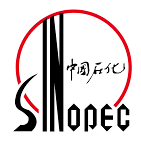Abstract / Resumen
ToggleAs usual we finish our S3 Newsletter with some articles not so closely related to the S3 business world.
This time, we continue with both the list of the top 10 Chinese companies and the recently launched list focusing on the 10 most popular hobbies in China.
The top 10 most significant Chinese companies
After highlighting the most relevant aspects of BYD (automotive), Kweichow Moutai (alcoholic beverages) and Tencent (internet and video games), we will now focus on two companies at the same time, namely the energy giants Sinopec and PetroChina.
Talking about the energy sector in China, especially in terms of fossil fuels, means talking about these two companies, both controlled by the government:
- Sinopec, leader in turnover (US$435B).
- PetroChina, leader in capitalisation (US$200B)



Together with China State Grid (the state-owned electricity grid company), both companies form part of the top-10 of the Global Fortune 500 list of the world’s largest companies (led by Walmart), giving an idea of their business weight.
And to be exact, PetroChina is the main entity and brand of China National Petroleum Corporation (CNPC).
Still, there are important differences between the two companies, as PetroChina is more relevant in exploration and refining, while Sinopec is better known for its extensive distribution network.

The top 10 most popular hobbies in China
Once again, we will delve into the daily lives of Chinese citizens, discovering what they do when they are not working, studying or spending time with their families.
In the previous edition of the S3 Newsletter we put the spotlight on a pastime that many Westerners would directly identify with China and other East Asian countries: calligraphy.
The second most prominent traditional hobby in China is playing mahjong, a popular pastime especially among older people, where everyone gathers around a table, engaging in strategic thinking and social interaction.
A four-round game typically lasts between 2 and 3 hours.


It is a board game of Chinese origin, exported to the rest of the world, and particularly to the West from the 1920s onwards.
Due to its popularity and influence, it has been spread all over the world via the internet.
Although nowadays the pieces are made of plastic, true works of art are still made, as they were in ancient times, in different materials.
More info on Mahjong on Wikipedia.
Source: https://www.pandanese.com/












